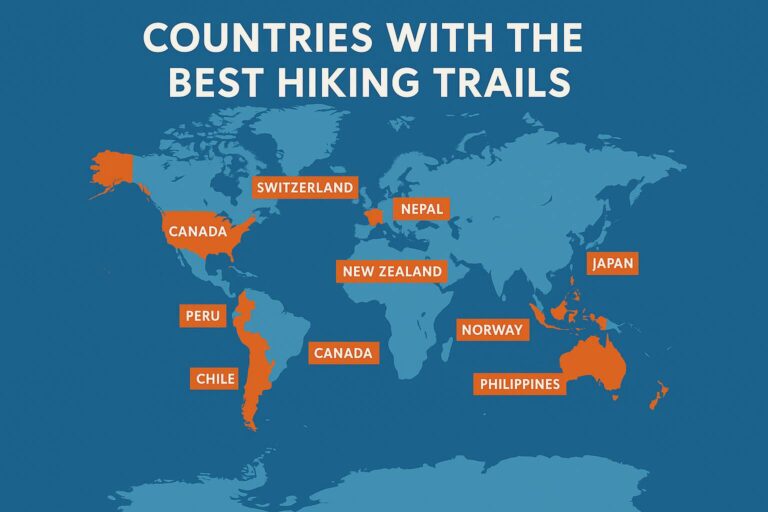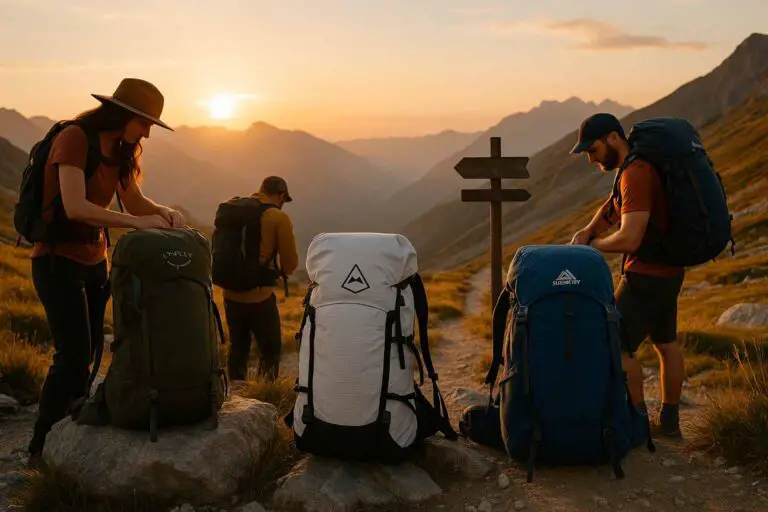Hiking is an excellent way to get outside, enjoy nature, and stay active. However, hiking in extreme weather conditions can be dangerous, particularly when the temperature is too high for hiking. Understanding the ideal temperature for hiking is essential to ensure a safe and enjoyable experience.
In this article, I’ll discuss the factors to consider when determining the ideal temperature for hiking, the recommended temperature range for hiking, and how to prepare for hiking in hot weather. Whether you’re a seasoned hiker or a beginner, this article will provide you with the knowledge you need to stay safe and comfortable while hiking.
Factors to Consider
Before determining the ideal temperature for hiking, it’s important to consider several factors that can impact how the body responds to temperature changes during a hike. The following are 3 of the key factors to consider:
- The impact of temperature on the body: When the body gets too hot, it sweats to regulate its internal temperature. However, when the humidity is high, sweat doesn’t evaporate as quickly, which can lead to dehydration, heat exhaustion, and heatstroke. In contrast, when it’s too cold, the body loses heat faster than it can produce it, leading to hypothermia.
- Weather conditions that can affect the ideal temperature for hiking: Temperature alone isn’t always a reliable indicator of hiking conditions. Other weather factors, such as wind, cloud cover, and precipitation, can also impact how the body responds to temperature changes.
- Altitude and humidity levels: Higher altitudes and humidity levels can also impact how the body responds to temperature changes. At higher elevations, the air is thinner, which means there is less oxygen available, making it more difficult to breathe. In humid conditions, sweat doesn’t evaporate as quickly, which can lead to dehydration and heat exhaustion.
Considering these factors is crucial when determining the ideal temperature for hiking. It’s also essential to understand how these factors impact your individual body’s response to temperature changes, which can vary depending on your fitness level, age, and overall health.
Ideal Temperature for Hiking
The ideal temperature for hiking can vary depending on several factors, including altitude, humidity, and individual tolerance to heat or cold. However, as a general rule, most hikers myself included find that temperatures between 50°F and 80°F (10°C and 27°C) are ideal for hiking.
Temperatures below this range can lead to hypothermia, while temperatures above this range can lead to heat exhaustion and heatstroke. It’s important to note that the ideal temperature range can vary depending on the individual’s fitness level, age, and overall health. Some hikers may feel comfortable hiking in temperatures outside of this range, while others may find them too extreme.
When planning a hike, it’s essential to check the weather forecast to ensure that the temperature is within the ideal range for hiking. If the temperature is expected to be outside of this range, it’s best to reschedule your hike or adjust your route to avoid exposure to extreme temperatures. It’s also important to pack appropriate clothing and gear to stay comfortable during the hike.
How to Prepare for Hiking in Hot Weather
Hiking in hot weather can be challenging, but with the right preparation, you can stay cool and comfortable on your hike. Here are 7 essential tips for preparing for hiking in hot weather.
- Check the weather forecast: Before heading out on your hike, check the weather forecast to ensure that the temperature is within the ideal range for hiking. If the temperature is expected to be too hot, consider rescheduling your hike for a cooler day.
- Start early or late: To avoid hiking during the hottest part of the day, plan to start your hike early in the morning or later in the evening when the temperatures are cooler.
- Wear appropriate clothing: Wear lightweight, breathable clothing that covers as much skin as possible to protect yourself from the sun. Light-colored clothing can also help reflect the sun’s rays and keep you cooler. Consider wearing a hat with a brim to protect your face and neck from the sun.
- Stay hydrated: Drink plenty of water before, during, and after your hike to prevent dehydration. Carry enough water with you to last the entire hike, and consider packing an electrolyte replacement drink to replenish your body’s electrolytes lost through sweating.
- Take breaks: Take frequent breaks in the shade to rest and cool down. Use a cooling towel or spray to cool yourself off during breaks.
- Adjust your pace: Slow down your pace to avoid overexerting yourself in the heat. Take shorter steps and focus on maintaining a steady pace rather than trying to go too fast.
- Know the signs of heat exhaustion and heatstroke: Learn the symptoms of heat exhaustion and heatstroke, such as headache, dizziness, nausea, and confusion, and take immediate action if you or someone in your group experiences them.
Conclusion
In conclusion, understanding the ideal temperature for hiking and preparing for hiking in hot weather is crucial to ensure a safe and enjoyable hiking experience. Factors such as weather conditions, altitude, and humidity levels can impact how the body responds to temperature changes during a hike. As a general rule, most hikers find that temperatures between 50°F and 80°F (10°C and 27°C) are ideal for hiking.
When preparing for hiking in hot weather, it’s essential to check the weather forecast, wear appropriate clothing, stay hydrated, take breaks, and adjust your pace. It’s also important to know the signs of heat exhaustion and heatstroke and take immediate action if you or someone in your group experiences them.
By following these guidelines, you can ensure that you stay safe and comfortable during your hike, whether you’re a seasoned hiker or a beginner. Remember to always prioritize safety and enjoy the beauty of nature.
Additional Resources
If you’re interested in learning more about hiking safety or finding gear and clothing recommendations for hiking in hot weather, here are some additional resources to consider:
- The American Hiking Society: The American Hiking Society is a nonprofit organization dedicated to promoting and protecting hiking trails and the hiking experience. Their website offers resources on hiking safety, including a guide on how to prepare for a safe and enjoyable hike.
- The National Park Service: The National Park Service manages many of the country’s most popular hiking trails and offers resources on hiking safety, including tips on how to stay safe in hot weather.
- REI Co-op: REI is a popular outdoor gear and clothing retailer that offers a wide selection of hiking gear and clothing, including items specifically designed for hiking in hot weather. Their website also features helpful articles on hiking safety and gear selection.
- The Leave No Trace Center for Outdoor Ethics: The Leave No Trace Center for Outdoor Ethics is a nonprofit organization dedicated to promoting responsible outdoor recreation. Their website offers resources on hiking safety, including tips on how to minimize your impact on the environment while hiking.
- The National Oceanic and Atmospheric Administration (NOAA): NOAA is a government agency that provides weather forecasts and climate data. Their website offers up-to-date weather forecasts for locations across the United States, which can help you plan your hike and determine whether the temperature is within the ideal range for hiking.
Don’t forget us! Outdoordoer.com: We cater to outdoor enthusiasts and those who live an active lifestyle. Our visitors have access to a wide range of resources, experiences, and materials to support their interests. We collaborate with top industry leaders, doers, and certified contributors to provide relevant and accurate information to our audience.




